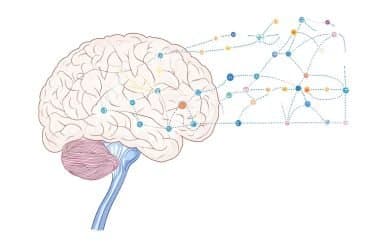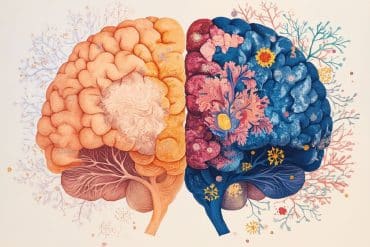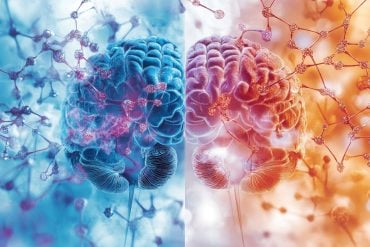Summary: Cerebrospinal fluid, our brain’s protective liquid, may be making brain cancers like glioblastoma more resistant to treatments. These findings indicate that when tumor cells are exposed to this fluid, they alter identity, resisting radiation and common medications.
However, an old anti-anxiety drug, trifluoperazine, seems promising as it makes these cells more receptive to therapies. This discovery could pave the way for repurposing the drug to improve survival rates in glioblastoma patients.
Key Facts:
- Exposure to cerebrospinal fluid causes glioblastoma cells to change, making them more resistant to standard treatments.
- Trifluoperazine, a long-used anti-anxiety drug, can re-sensitize these cancer cells to standard therapies without harming healthy brain cells.
- The research combines insights from neurobiologists, neurosurgeons, and oncologists, using tumor cells from 25 glioblastoma patients.
Source: Flinders University
A new research study shows that cerebrospinal fluid reduces current treatment efficacy in brain cancer and identifies new therapeutic opportunities.
Cerebrospinal fluid, the clear colourless liquid that protects the brain, also may be a factor that makes brain cancers resistant to treatment, Australian researchers led by Associate Professor Cedric Bardy at the South Austraila Health and Medical Research Institute (SAHMRI) and Flinders University reveal in the journal Science Advances.
Reporting how this occurs, the study in high-profile journal Science Advances shows that a decades-old anti-anxiety drug can improve the effectiveness of chemo-radiotherapy towards glioblastoma, or GBM, the most common and lethal brain cancer.
Brain cancers kill more children and adults under 40 than any other cancer. They are resistant to therapies that kill cancers elsewhere in the body. The study team speculates that unique brain features might contribute to this.
The collaborative Australian team of neurobiologists, neurosurgeons and oncologists tested the effect of the precious resource of human cerebrospinal fluid on the growth of tumour cells collected from 25 local patients with glioblastoma.
Among their findings, the tumour cells quickly changed their identity and became more resistant to radiation and the drug temozolomide, which are mainstays of glioblastoma therapy.
Associate Professor Cedric Bardy says, “Glioblastoma kills so many people who are otherwise fit, healthy and young, within months. This is a horrible disease, and the treatments available are just not effective enough despite serious side effects.
“This study helps us understand the limitations of the current chemotherapies and provides new hope for repurposing a class of drugs that could be added to the standard of care. We are working hard now to try this on patients in a clinical trial.”
Investigating the molecular basis for these changes, the team found glioblastoma cells exposed to cerebrospinal fluid were more resistant to ferroptosis, a form of therapy-induced cell death.
Importantly, they showed that trifluoperazine, an anti-anxiety drug used since the 1950s, could re-sensitise glioblastoma cells to both therapies. In contrast, trifluoperazine was found not to harm healthy brain cells. The researchers concluded that combining trifluoperazine with standard care may improve GBM patient survival.
About this brain cancer and neuropharmacology research news
Author: Tania Bawden
Source: Flinders University
Contact: Tania Bawden – Flinders University
Image: The image is credited to Neuroscience News
Original Research: Open access.
“Human cerebrospinal fluid affects chemoradiotherapy sensitivities in tumor cells from patients with glioblastoma” by Cedric Bardy et al. Science Advances
Abstract
Human cerebrospinal fluid affects chemoradiotherapy sensitivities in tumor cells from patients with glioblastoma
Cancers in the central nervous system resist therapies effective in other cancers, possibly due to the unique biochemistry of the human brain microenvironment composed of cerebrospinal fluid (CSF). However, the impact of CSF on cancer cells and therapeutic efficacy is unknown.
Here, we examined the effect of human CSF on glioblastoma (GBM) tumors from 25 patients. We found that CSF induces tumor cell plasticity and resistance to standard GBM treatments (temozolomide and irradiation).
We identified nuclear protein 1 (NUPR1), a transcription factor hampering ferroptosis, as a mediator of therapeutic resistance in CSF. NUPR1 inhibition with a repurposed antipsychotic, trifluoperazine, enhanced the killing of GBM cells resistant to chemoradiation in CSF. The same chemo-effective doses of trifluoperazine were safe for human neurons and astrocytes derived from pluripotent stem cells.
These findings reveal that chemoradiation efficacy decreases in human CSF and suggest that combining trifluoperazine with standard care may improve the survival of patients with GBM.







